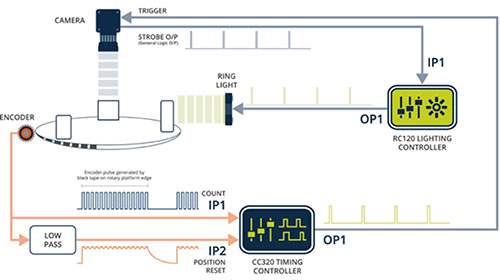- Home >
- CC320 firmware updates increase functionality
CC320 firmware updates increase functionality
CC320 firmware updates increase functionality
|
The latest version of firmware, v026, for the CC320 trigger timing controller has a number of additional modes, including minimum and maximum trigger pulse width filters, D-type and RS latches and a counter. These allow even more complex functions to be built up with the CC320.
|

|
The new additions to the CC320 firmware are:
- Mode 13 Triggered Counter (Cou)
This is a counter which outputs a pulse after a number of input pulses. The start of the count is triggered by another input.
- Mode 14 Minimum Pulse Trigger (iPF)
- Mode 15 Maximum Pulse Trigger (APF)
These functions ignore trigger pulses less or (or greater than) a certain pulse width.
- Mode 16 D-Type Flip Flop (dLA)
- Mode 17 Edge Triggered RS Latch (rLA)
Like traditional TTL latches, which can be used to remember previous triggers.
The use of the minimum pulse trigger capability is illustrated in a Gardasoft demonstration system, shown schematically above. The overall demonstration shows the ability of the Gardasoft TR-CL180 single-channel Industrial liquid lens controller to adjust the focus of an Optotune tunable lens in milliseconds in order to read labels on packages of different heights travelling past a camera at high speed. For the demonstration, the packages are positioned on a turntable which rotates them under the camera which then shows the acquired images on a screen.
The CC320 trigger timing controller reads marks on the edge of the turntable using a sensor, rather like an encoder, in order to work out its position and speed. This information is used to trigger the lighting controller to pulse the light and to adjust the lens focus for each package.
There is a gap in the markings and the CC320 uses the minimum pulse width filter to look for a minimum time gap from the sensor. It then knows where the turntable is, so it can be synchronised without having to have a second sensor.
Application Note APP937 gives useful information on some of the huge range of configurations and possible applications for the CC320 trigger timing controller.
Download the application note

